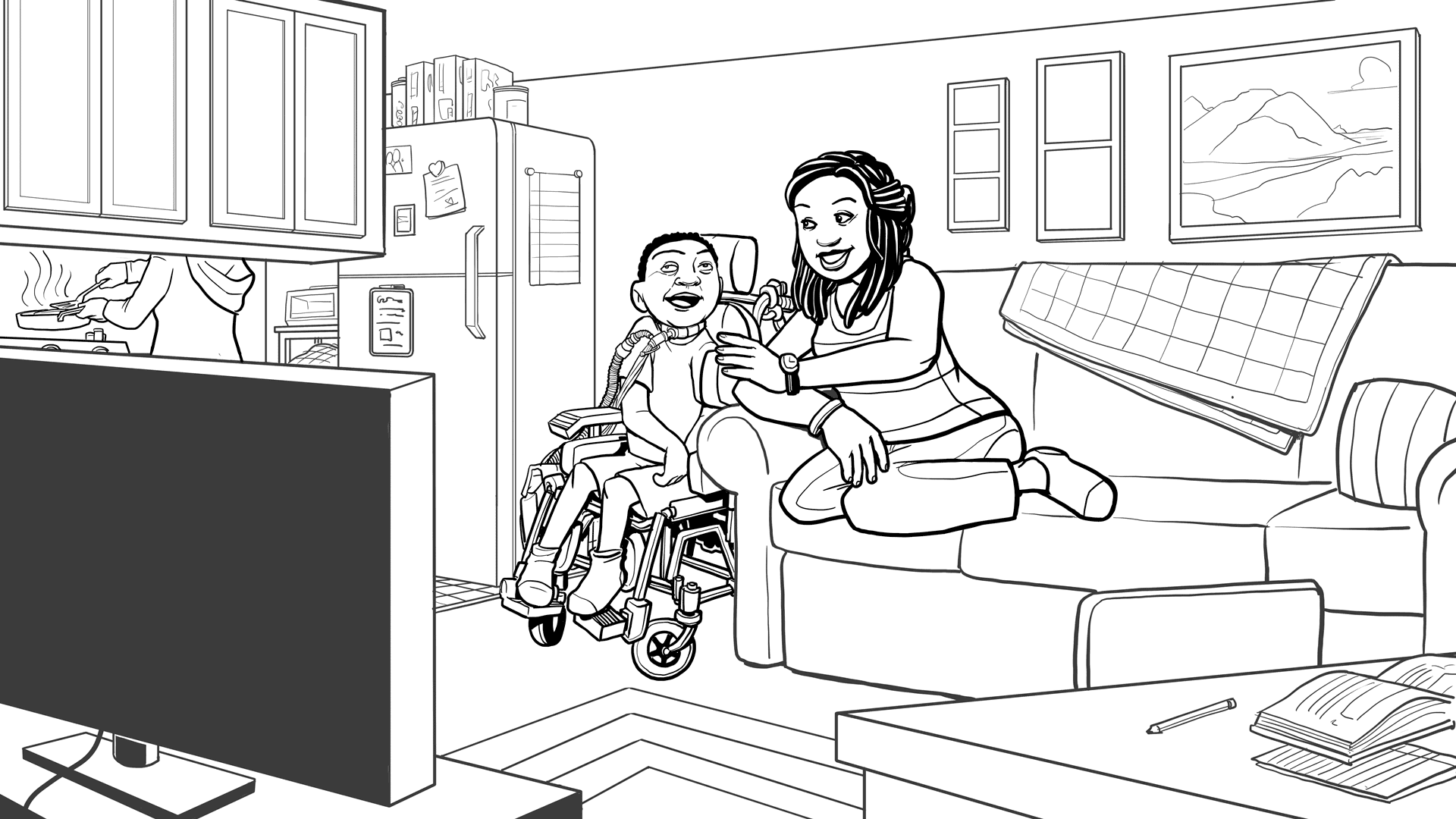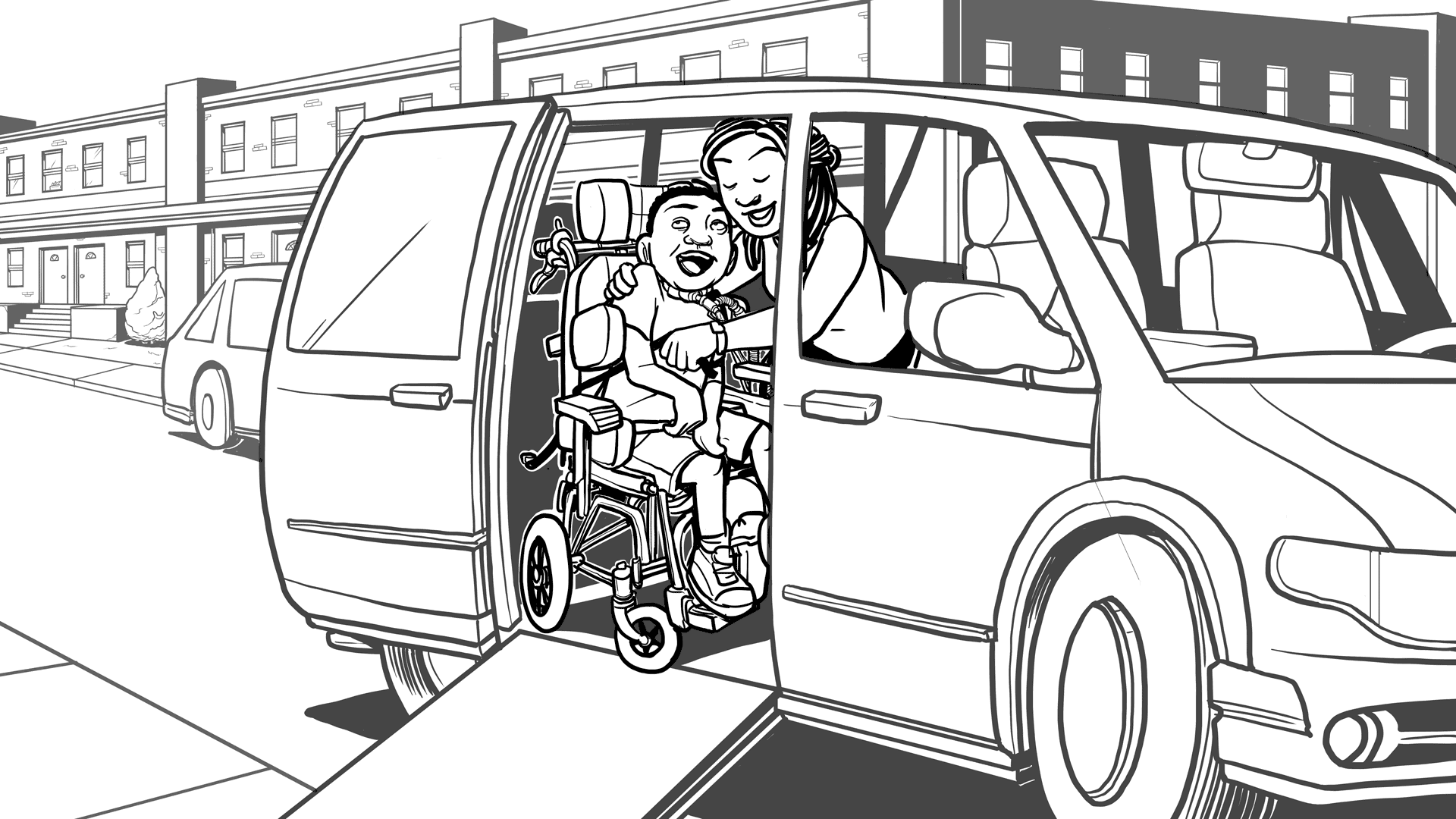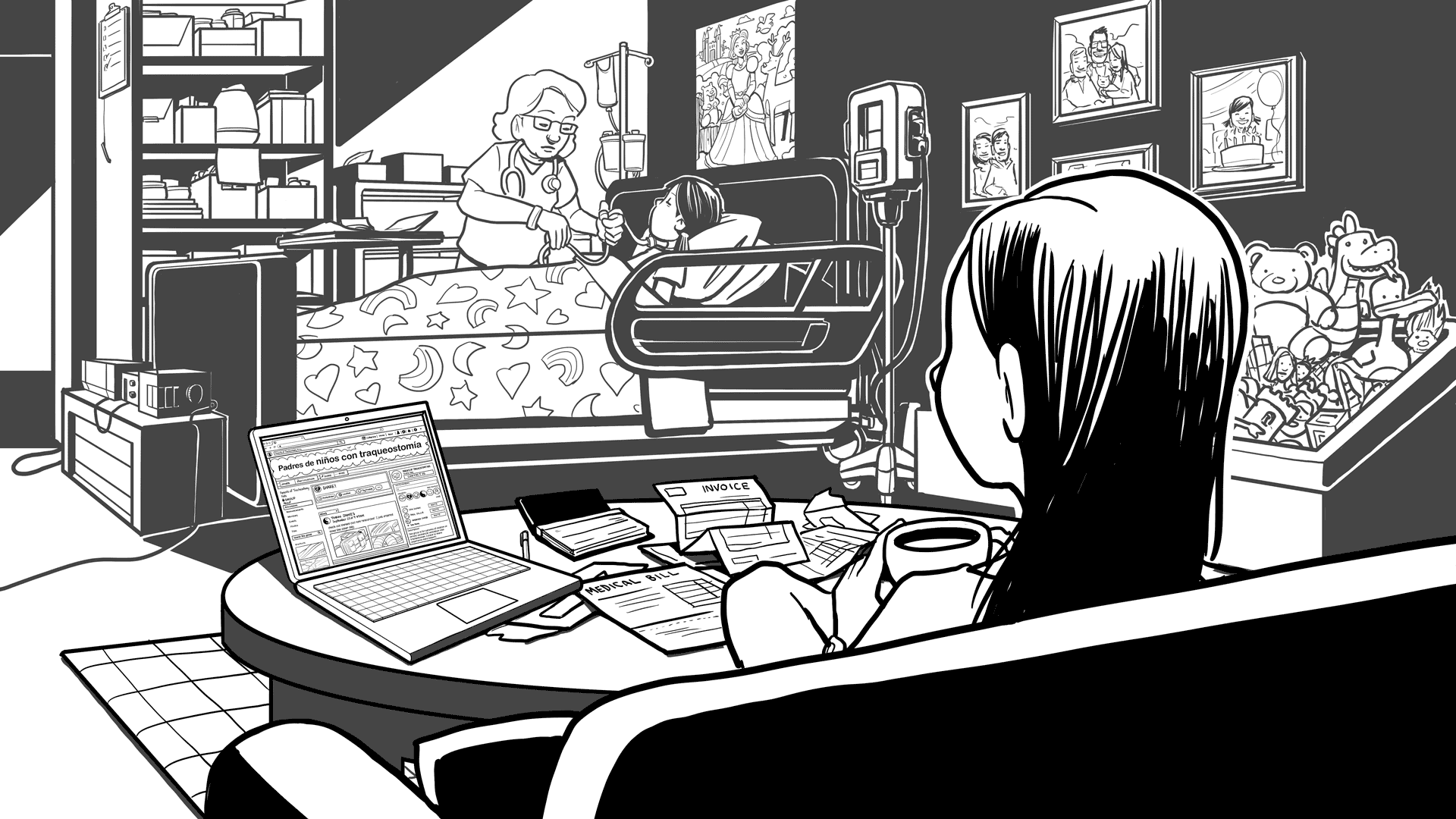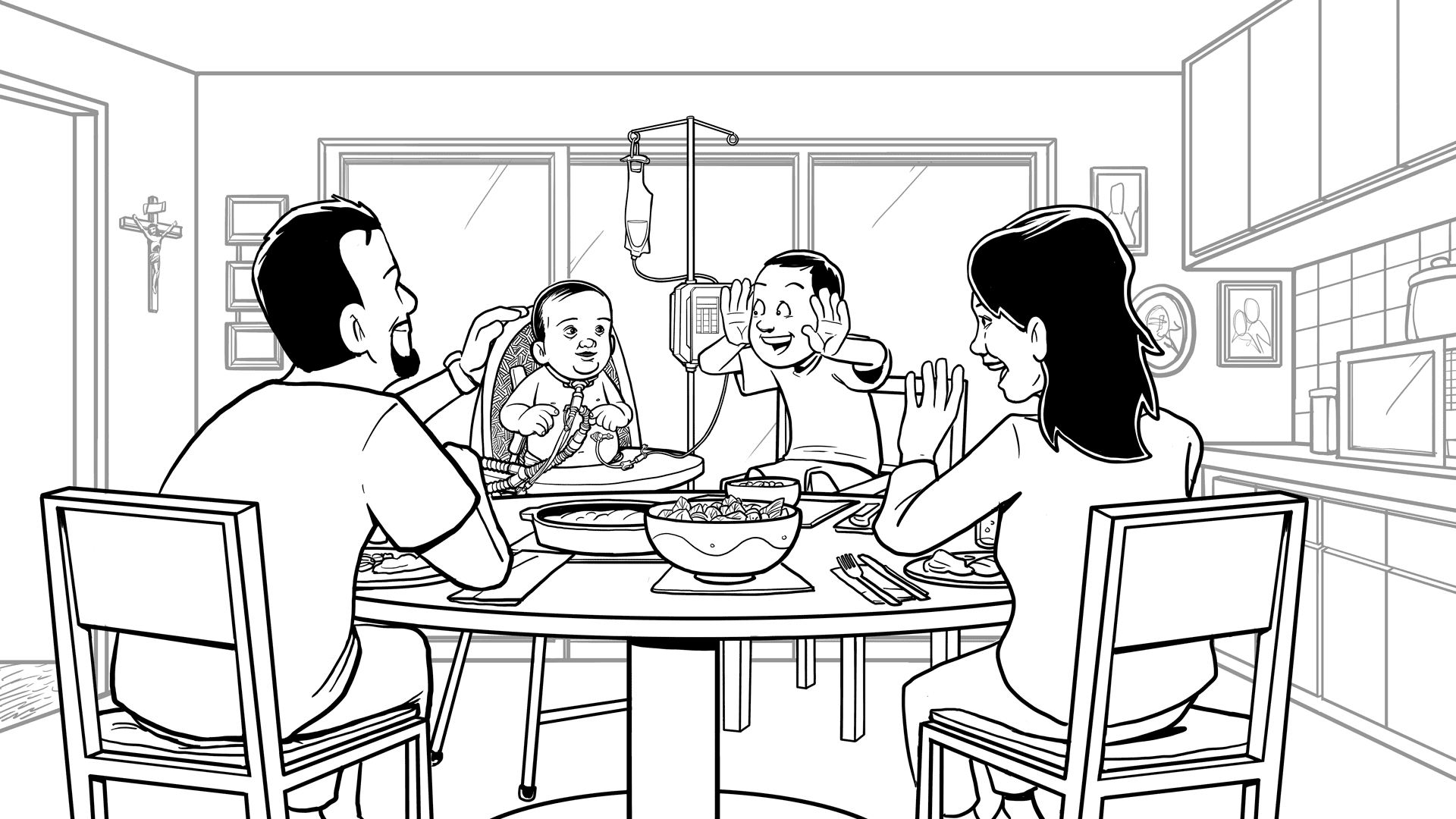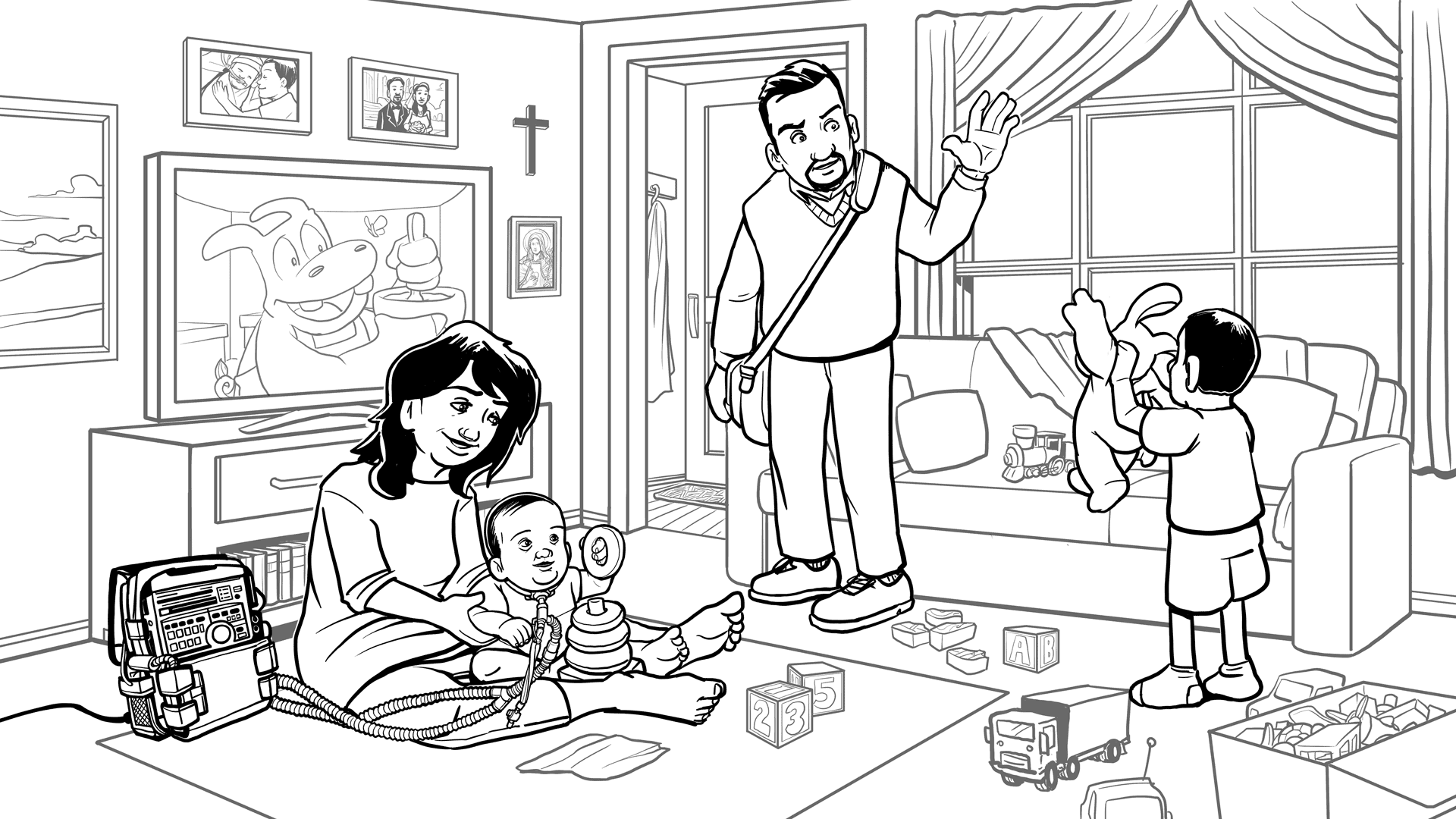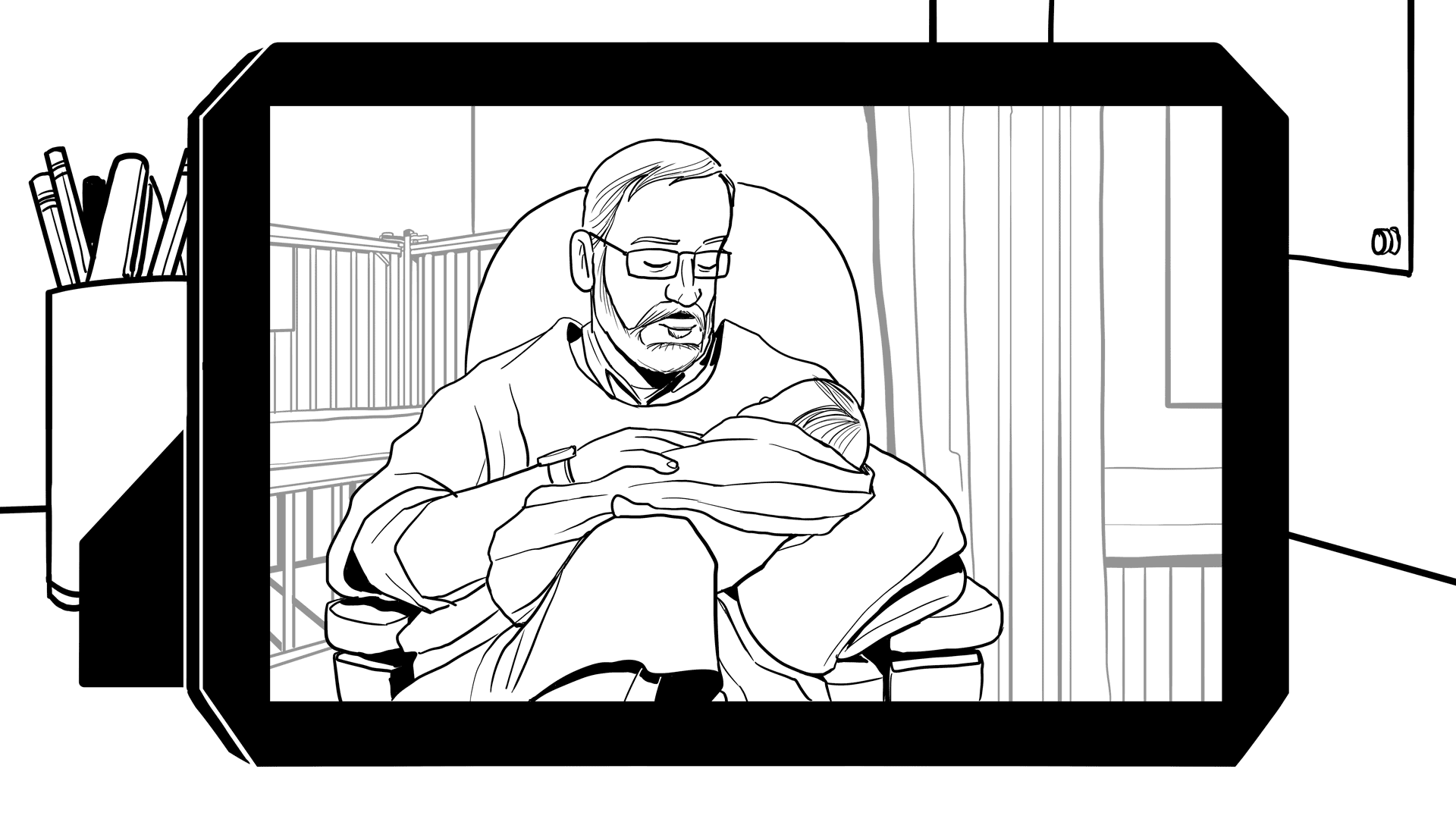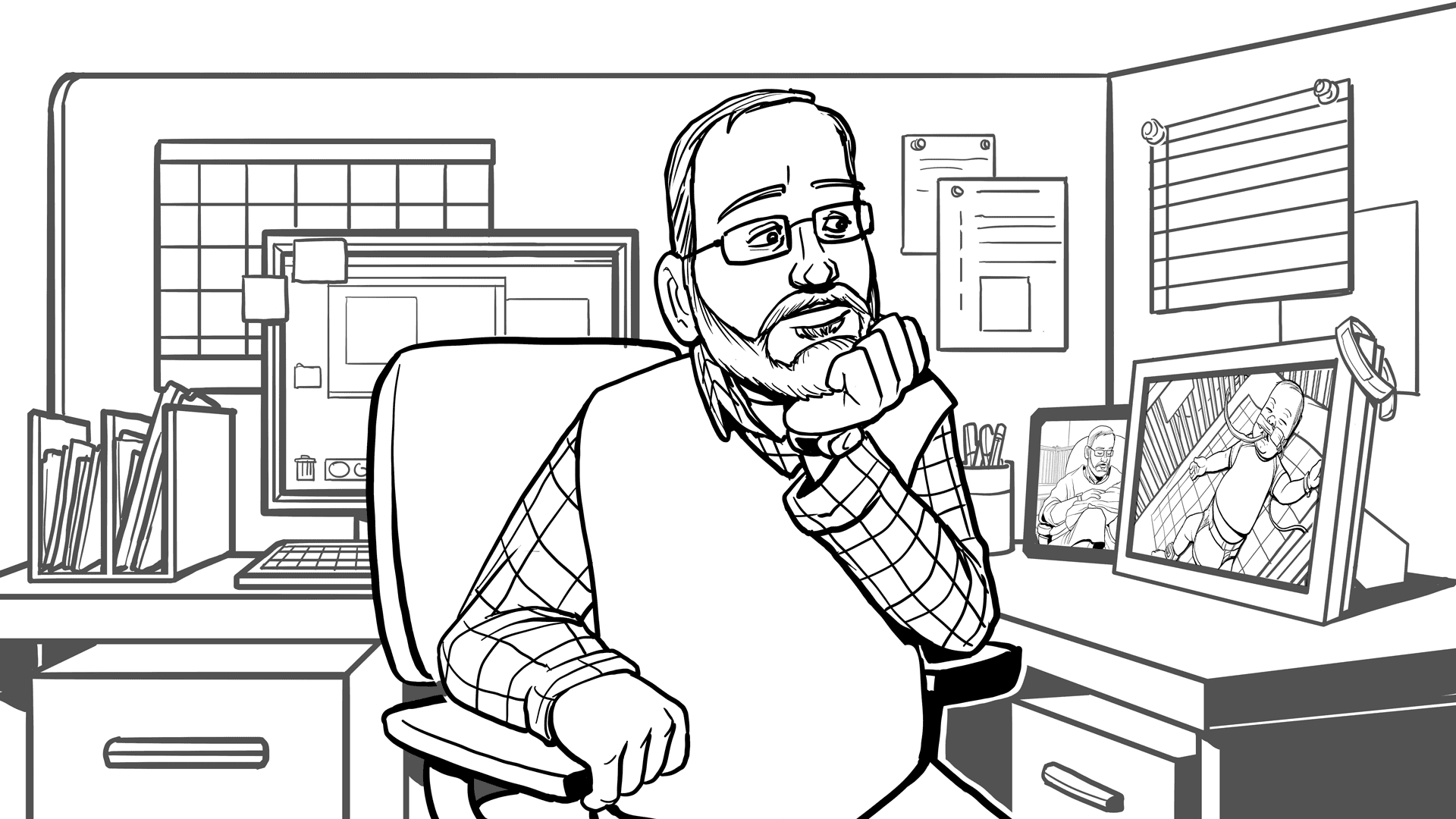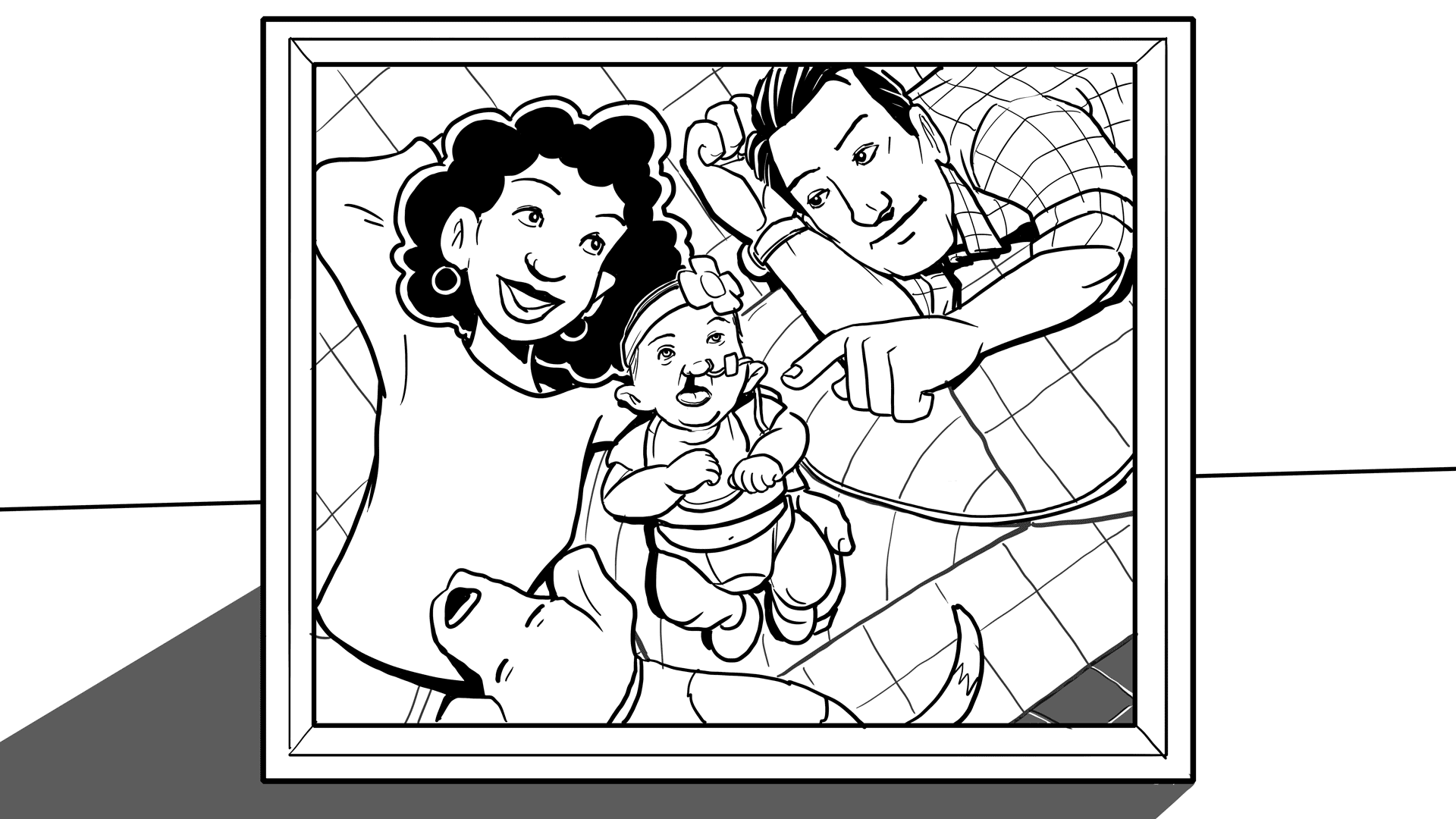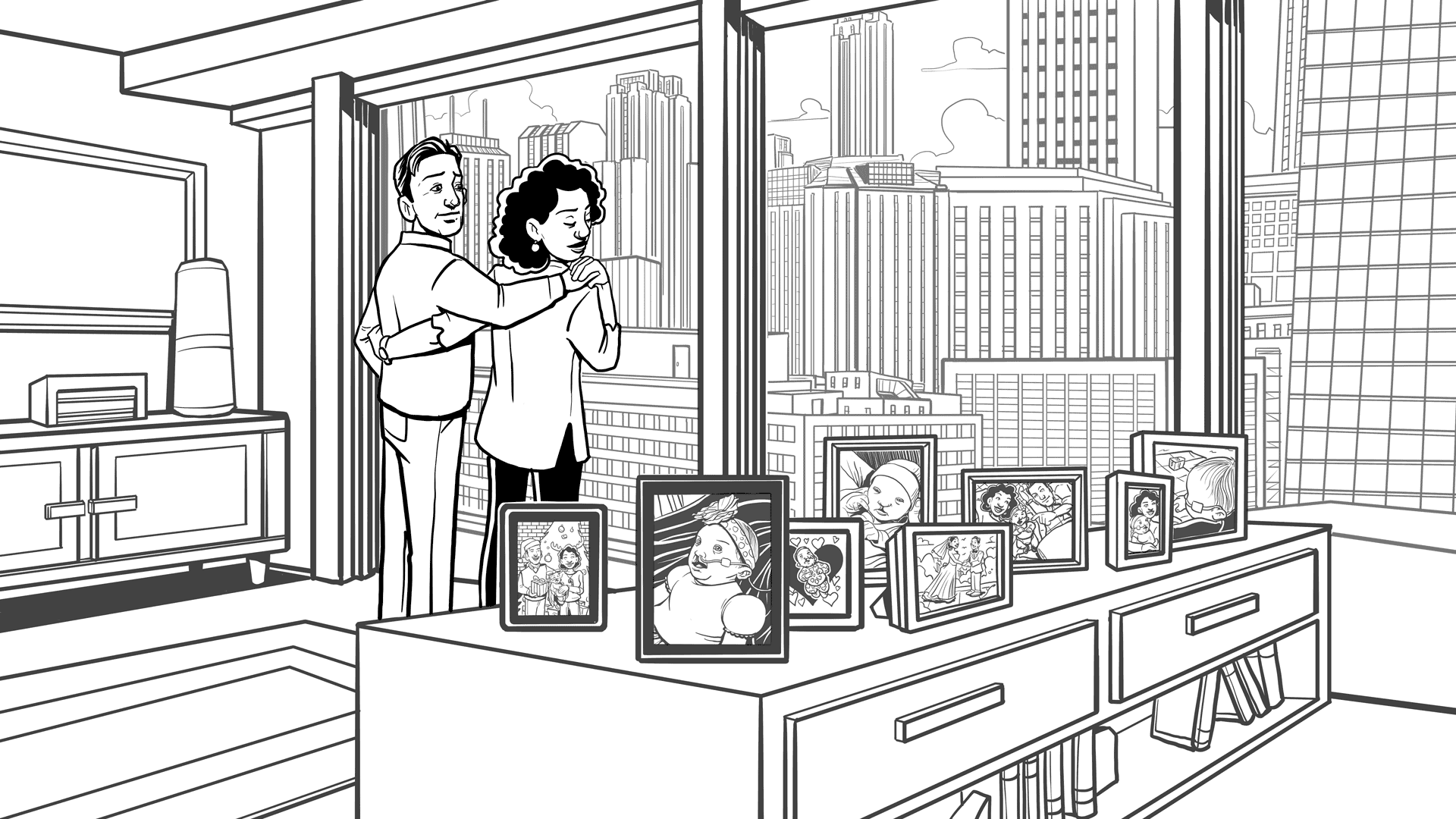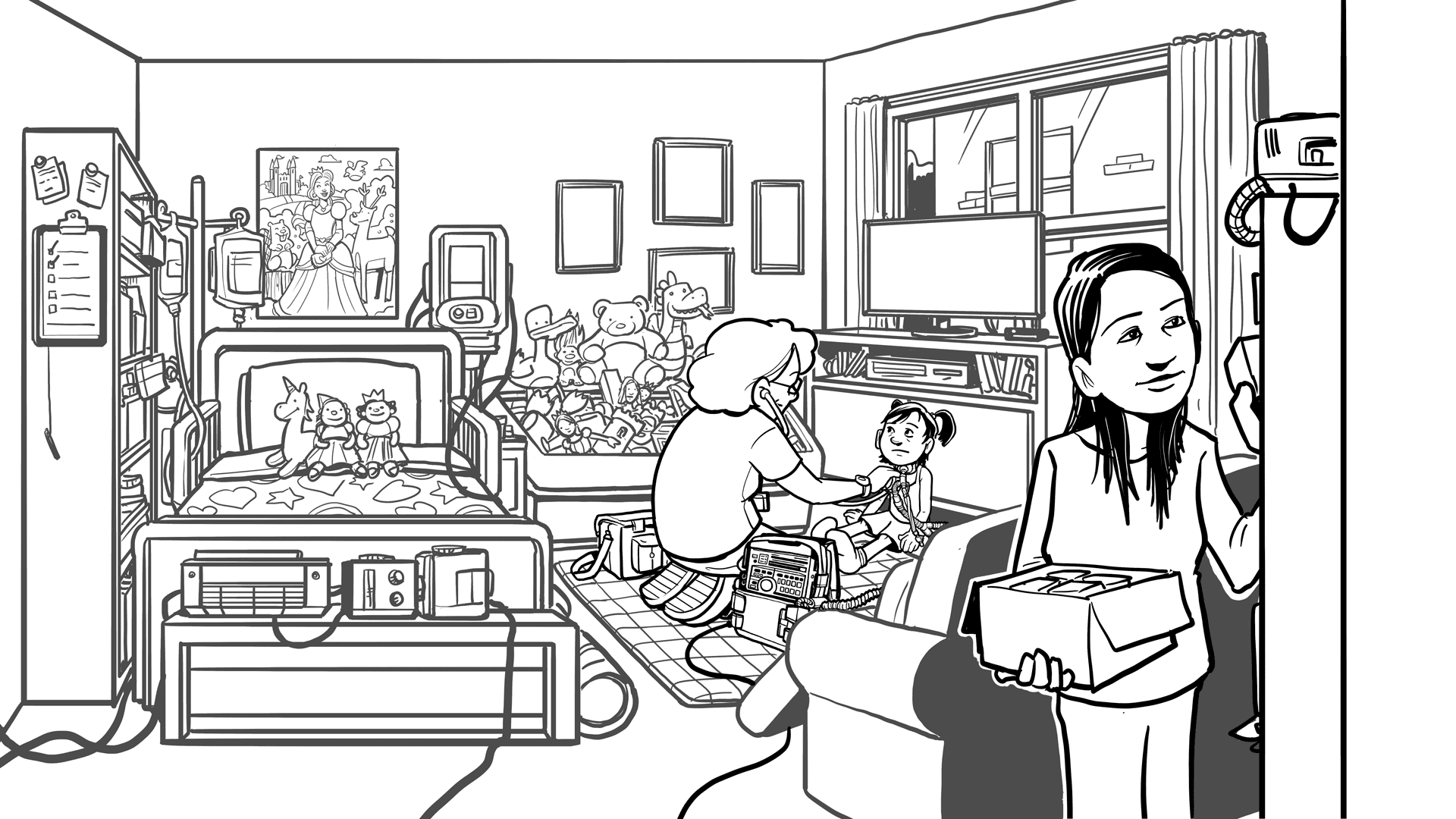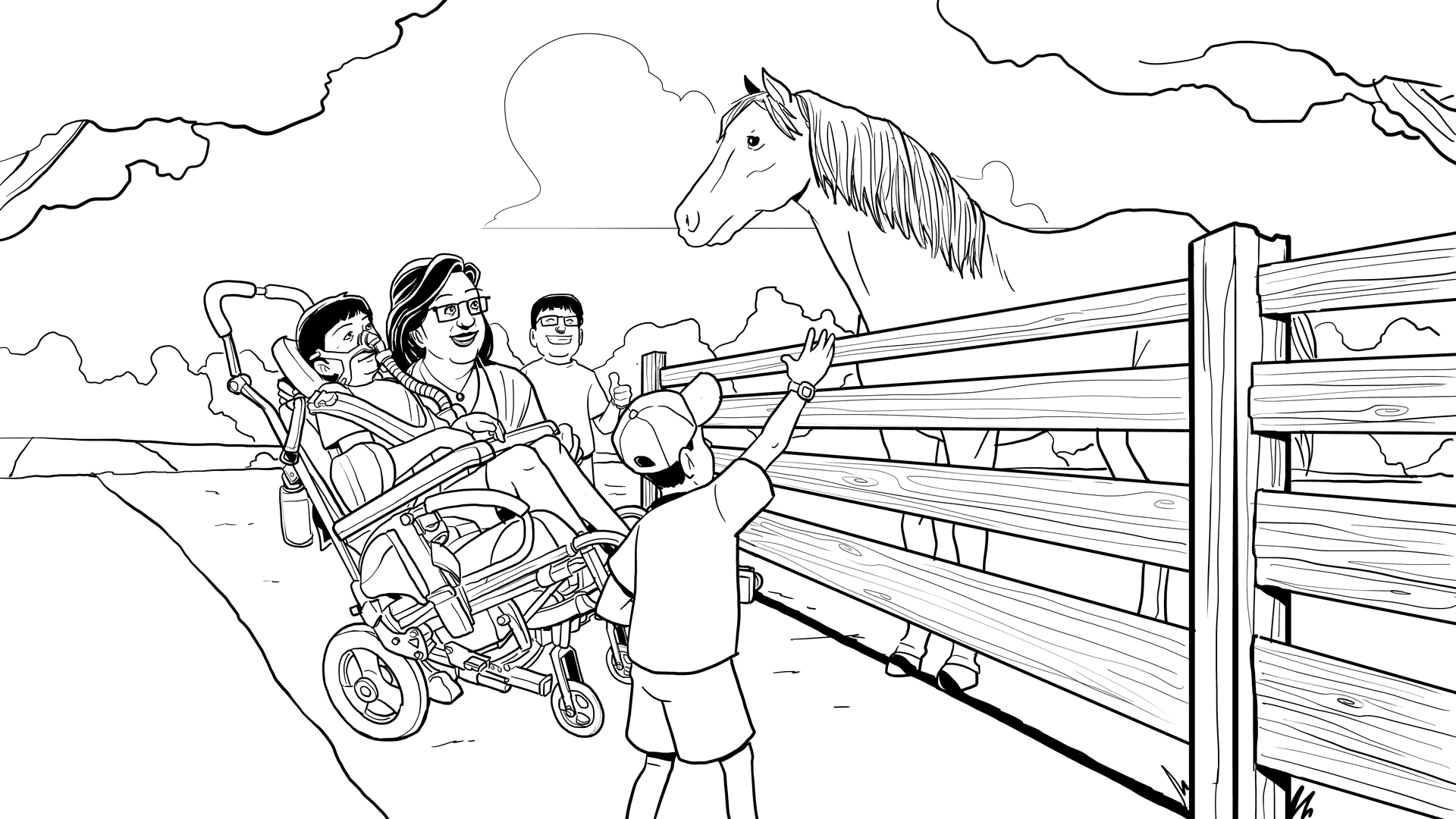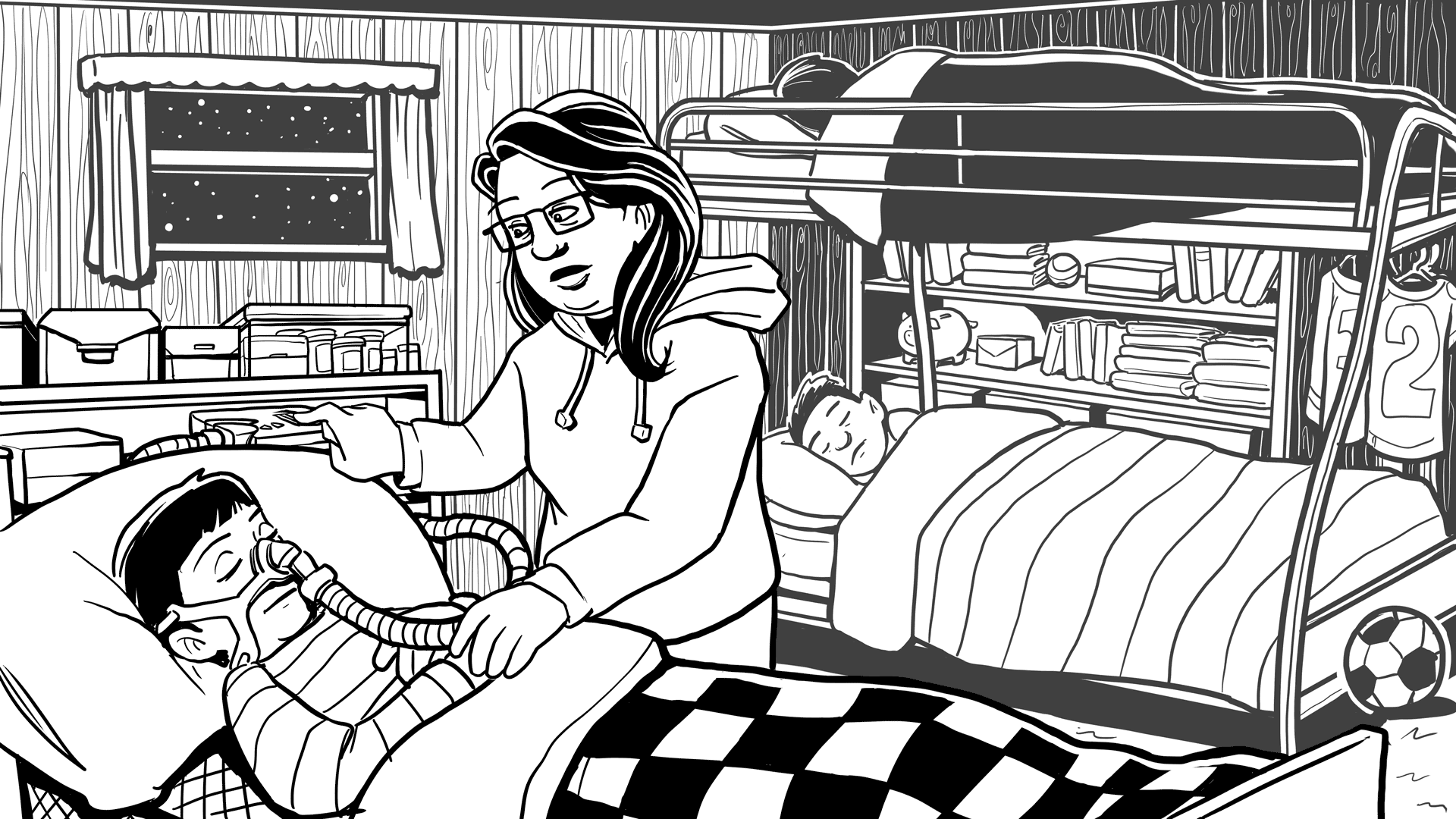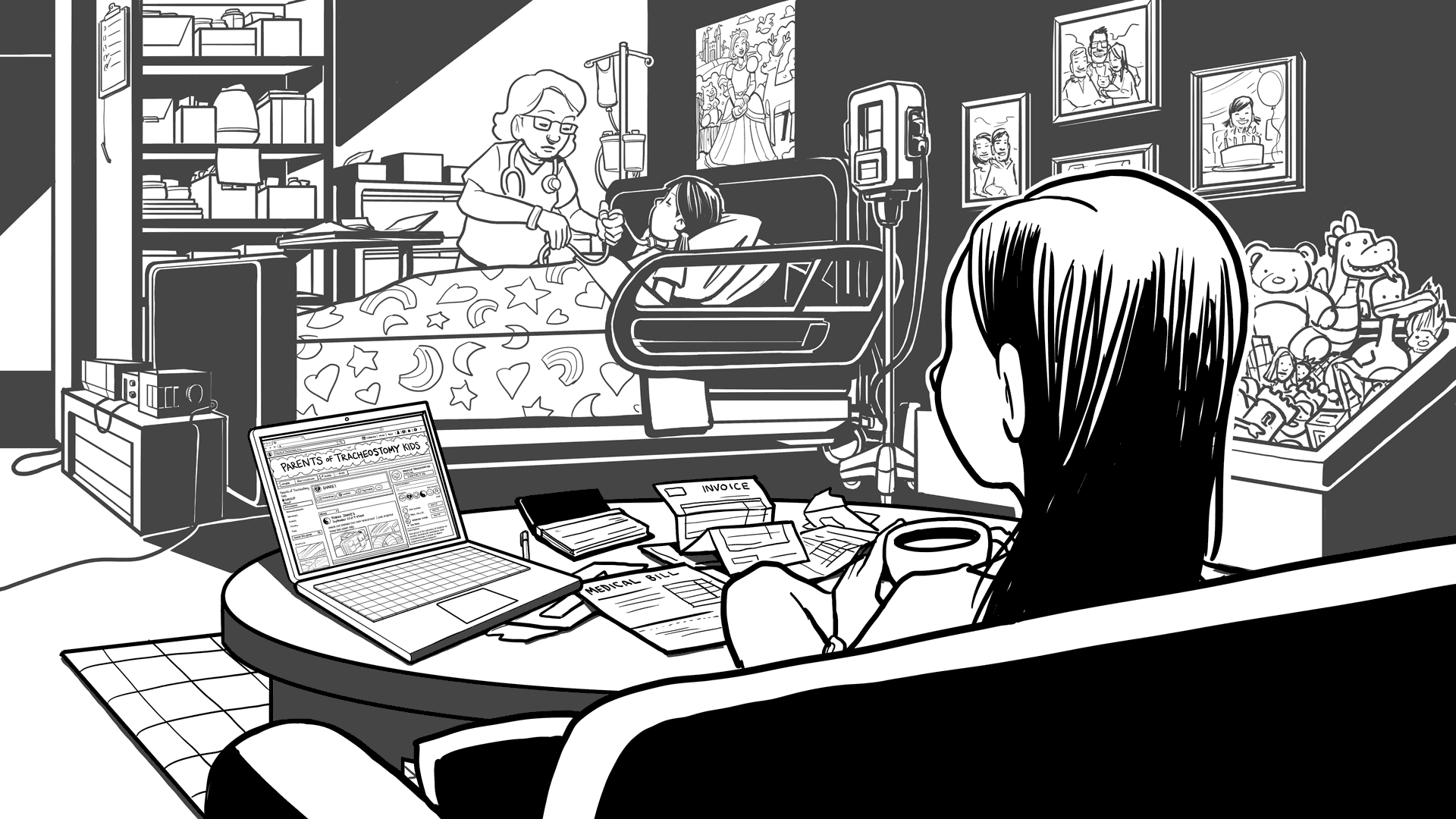Balancing work, time, and money
Changes in your child’s medical care make new demands on your work, time and money.
You can listen to two different family experiences below.
Catherine
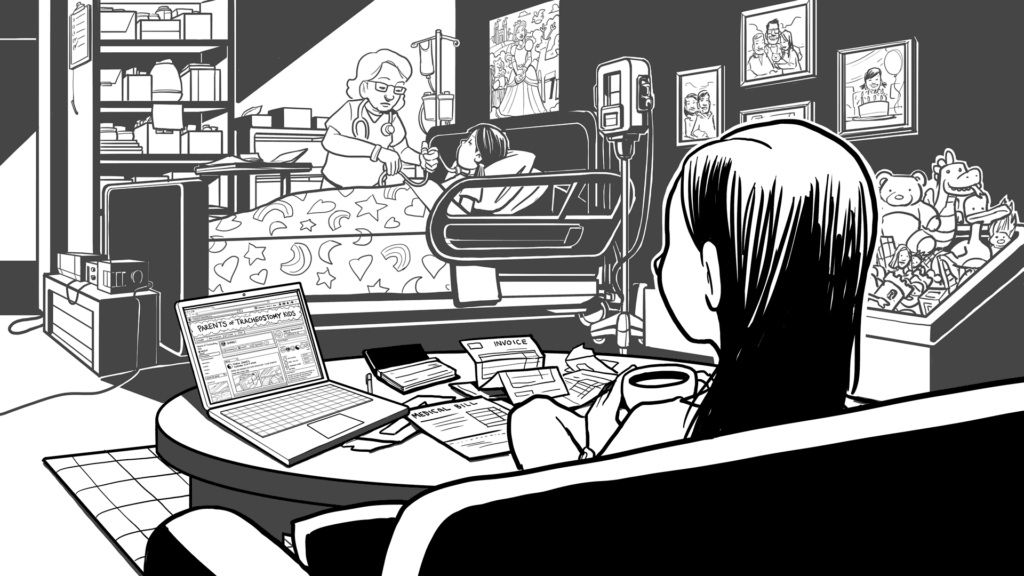
“Having a child on a vent is expensive! Our state insurance covers most of our costs…”
+ Read Transcript
Scroll for full transcript
Catherine: Having a child on a vent is expensive! Our state insurance covers most of our costs, but I wish someone had helped us apply for that much earlier. Ken and I both used to work, but my company didn’t understand the amount of attention my daughter needs. I missed a lot of work for Vivian’s medical appointments or because nurses didn’t show up. My boss threatened to fire me, so Ken and I decided I should quit and stay home with Vivian. Ken now works two jobs.
And although the insurance really helps, they won’t pay for supplies once we’ve run out. For instance, they only pay for so many trach ties a month—if we run out because the ties get wet or dirty or whatever, then we have to buy extras and pay for them ourselves. Running the vent full-time drives up our electricity bill too, and so does having nurses in our home.
We are lucky to have financial support from family and from Ken’s work. His colleagues started an online fundraiser for Vivian that raised a lot of money for us. The outpouring of generosity from them was amazing. It also helps to be plugged-in to a few social media groups. This one group for moms of children with trachs has been a great for finding inexpensive medical supplies. I don’t know how we’d do it otherwise.
Mary
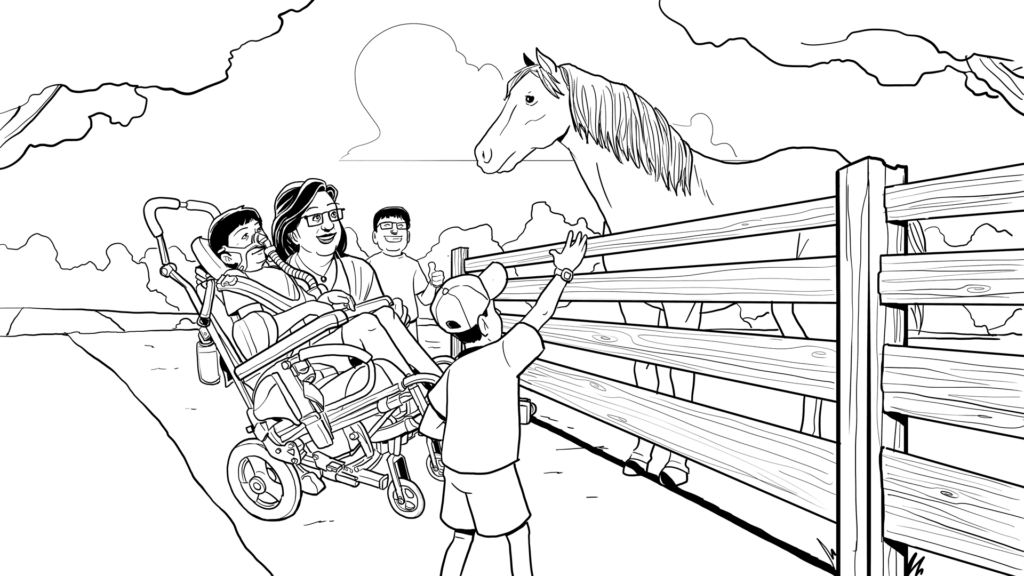
“When Chayton is sick, I can’t go to work, sometimes for a week…”
+ Read Transcript
Scroll for full transcript
Mary: When Chayton is sick I can’t go to work, sometimes for a week, because he needs more breathing treatments when he’s sick.
My husband, Joseph is a mechanic and is always working because farm equipment is always breaking down. He comes home late a lot. That makes it hard on me, being the primary person taking care of Chayton.
I don’t know what I would do without his cousin, Kaitlyn. She is always here. She in the 11th grade and comes over after school to help with Chayton so I can go work at the hair salon. She also watches my other two boys. My boys are really good with Chayton, and they help too. Kaitlin loves Chayton – we pay her a little something for her help when we can.
Even with Kaitlyn and the nurses, it’s still hard. It is gradually getting worse for him and he is sick more and more often. But we are fortunate that the Indian Health Services pays for his medicines and equipment. And the doctors on the reservation are really nice. They call the lung doctor at the children’s hospital if Chayton is getting worse. We try to take care of him at home because when he goes to the hospital, I miss work and I don’t get paid when I am not working. It’s not easy but what else can I do? Chayton is my son and I do whatever I have to for him.
